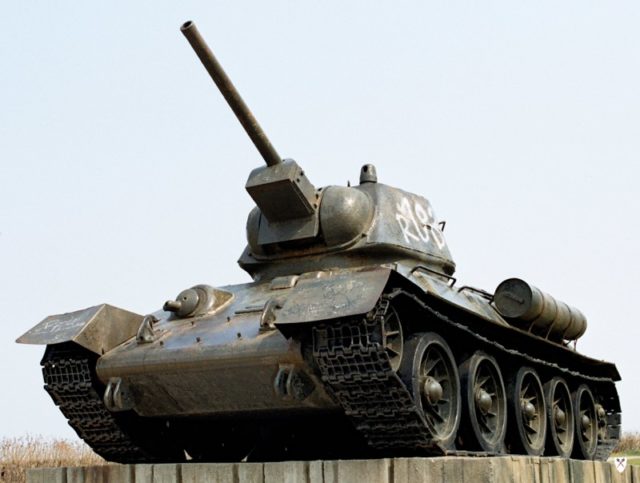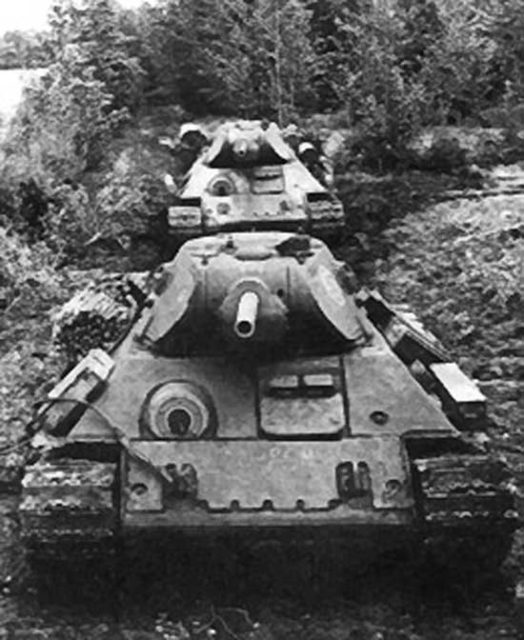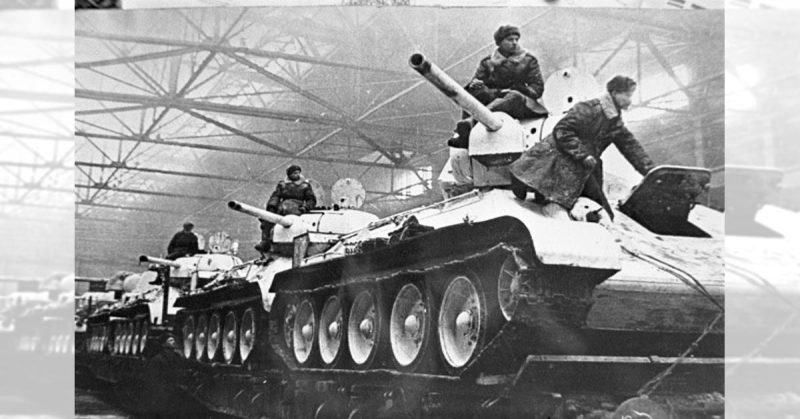The German Wehrmacht had it relatively easy when the Soviet Union was invaded during Operation Barbarossa in 1941— until they came up against the Russian T-34 tank.
The final judgment on the tank is maybe less than what Soviet legend would have it, but the reports are still flattering. Eventually, the T-34 tipped the balance in favor of the USSR when it came to battles using mostly armor. In terms of mass production, the vehicle outmatched anything the Germans could accomplish when it came to manufacturing.
In the hands of resolute Soviet tankers, such as at Kursk, considered the greatest tank battle in history, the Germans were forced to retreat.
The T-34 was without doubt revolutionary, but it was not the first in anything, except how to combine a diesel engine, thick sloped armor, wide tracks and a relatively powerful gun, explained Jason Belcourt, a U.S. Army veteran who served in the armor branch.

Nazi Germany launched Operation Barbarossa on June 22, 1941, a huge assault on the Soviet Union that was the largest offensive in history comprising over three million German soldiers, 150 divisions, and 3,000 tanks – three mammoth army groups that created a 1,800-mile long front.
Germany expected to confront an inferior enemy, which were called by Adolph Hitler “Untermenschen.” Delirious from victories in France and Poland, Hitler and many of his confederates in the military high command believed it was Germany’s destiny to invade Russia. ‘The end of the Jewish domination in Russia will also be the end of Russia as a state,’ Hitler wrote in his manifesto, Mein Kampf.
For months Germans scored victory upon victory, but then the attack stalled, and the debut of a new Soviet tank shocked the Wehrmacht.
The new armored vehicle had a formidable 76-millimetre gun, thick sloped armor and moved quickly with a speed of more than 35 miles per hour. It had many advanced design features for its day. And, most importantly, it could make mincemeat out of German Panzers.
But it did have shortcomings, which included poor visibility for the crew and sub-standard Soviet workmanship.
They were sufficient, but they were not miracle weapons and had their faults, wrote Philip Kaplan in Rolling Thunder: A Century of Tank Warfare. For all its faults, however, it is now referred to by tank specialist and historians as probably the best tank of WWII.
The beginnings of the T-34 are straightforward enough. The Red Army needed a replacement for the BT-7 cavalry tank, which was quick and lightly armored for use in mobile warfare. It also had Christie suspension, one reason for the tank’s improved speed.
However, during a 1938- to -1939 border war with Japan, the BT-7 performed poorly. Even with its low-powered gun, Japanese Type 95 tanks easily demolished the BT-7’s. Tank attack crews also assaulted the BT-7s with Molotov cocktails, leaving the tank a flaming wreck when flammable gas dripped through openings in poorly-welded armor into the vehicle’s engine compartment.
The T-34 was the remedy. It retained the Christie suspension, used a V-2 34 V12 diesel power plant instead of a gas engine and gave the crew speeds that were 10 miles per hour faster compared to the German Panzer IV or Panzer III.
And the high-velocity gun had the power to kill any tank in the world at that time.

Belcourt told War is Boring that the combination of the large gun, sloped armor, sufficient speed and good flexibility was superior to anything the Germans had in tracked vehicles.
The USSR had in excess of 22,000 tanks by mid-1941, a greater number than all the armies of the world combined, and quadruple the number of tanks in the German inventory.
At the end of the war, the USSR had made almost 60,000 T-34 tanks, making the point that quantity possesses an excellence all on its own.
Initially, the Germans did not know how to counter the danger the T-34 presented. The Germans’ 37-millimeter Kwk36 and the 50-millimeter Kwk 38 anti-tank guns could not put a dent in the Russian tank with a round to the front.
As recourse, German tankers could try a flank shot with their guns. The Wehrmacht could lay anti-tank mines. Soldiers gambled with their lives in close assaults using Molotov cocktails and satchel explosives.
Out of desperation, the Germans used altered 88-millimetre anti-aircraft guns to halt attacking T-34s with direct fire.
The Russians did not have enough well-trained manpower to staff the tanks, and as a result wasted the T-34’s as well as its crews in large numbers.
When the Soviets did have enough crews, the Germans had pulled ahead with tanks with high-velocity guns and improved anti-tank weapons such as the Panzerfaust, a recoilless anti-tank weapon tipped with a high-explosive charge.
But the Russians always had a greater number of T-34s than the Germans had Tigers or Panthers, The National Interest reported.
The tank was always a winner in the battle of production, Belcourt said. From June 1941 until the war ended, the Soviets were always making a tank that was often decent and never worse than satisfactory.
